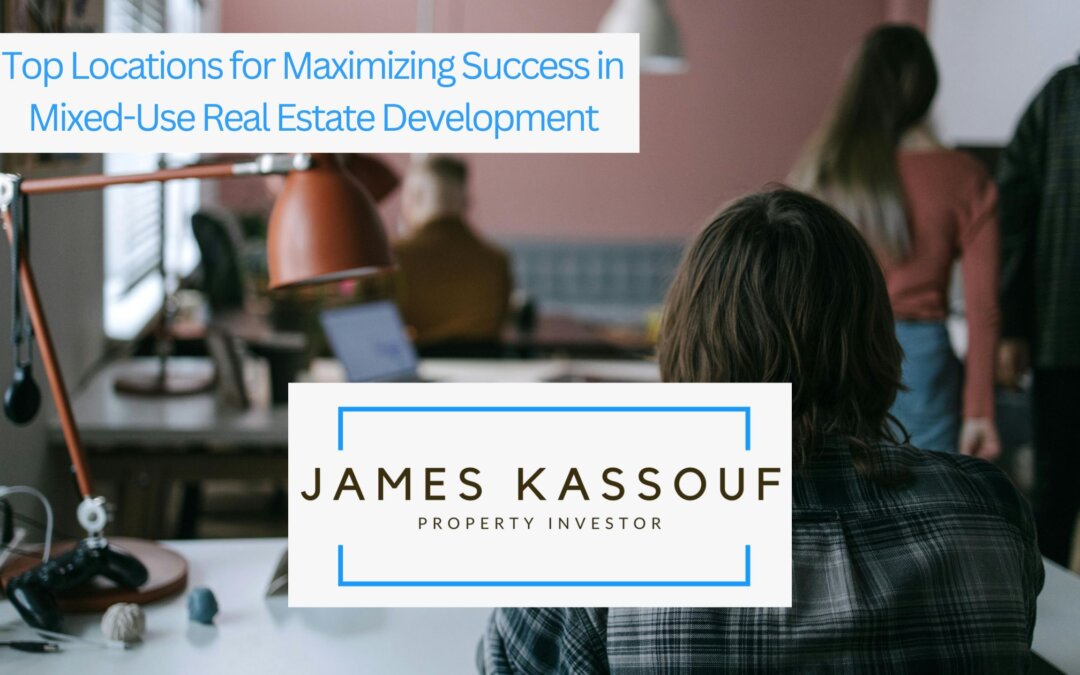Mixed-use real estate development, a contemporary urban planning strategy, harmonizes residential, commercial, and leisure spaces within a single project. This approach, gaining traction globally, offers a sustainable and integrated living experience. The concept isn’t new; traditional cityscapes often naturally evolved. However, modern developments are meticulously planned, combining housing, work, and play areas in a cohesive unit. They aim to create vibrant, self-sustaining communities where daily needs are within walking distance, reducing reliance on transportation and promoting social interaction.
The success of such developments hinges on selecting optimal locations. Ideal spots are typically at the intersection of various socio-economic factors: population density, economic vibrancy, accessibility, and cultural significance. Urban centers, for instance, offer high visibility and access to amenities, making them prime locations. Suburban areas, on the other hand, can offer the space necessary for more significant developments.
The rise of mixed-use development reflects changing lifestyles. As remote work becomes more prevalent, the line between living and working spaces blurs, making these developments increasingly attractive. Moreover, they cater to a growing desire for community-centric living, offering a solution to urban sprawl by creating compact, efficient, and vibrant neighborhoods.
A mixed-use development is a multidimensional concept rooted in creating spaces that blend residential, commercial, and recreational uses. This approach responds to the evolving demands of urban living, offering a sustainable alternative to traditional, single-use developments. By integrating various functions within a single project, vibrant, walkable communities enhance the quality of urban life.
Historically, cities naturally developed into mixed-use areas, with shops, offices, and homes coexisting. However, post-World War II urban planning favored segregation of uses, leading to urban sprawl and increased reliance on automobiles. Today, there’s a renewed interest in it as a tool for urban revitalization and sustainability. It’s seen as a means to combat the negative impacts of sprawl, such as traffic congestion, environmental degradation, and social isolation. They can take a vertical or horizontal form. Each type offers unique benefits and challenges, depending on the context and location.
The resurgence of mixed-use developments reflects a shift in lifestyle preferences. There’s a growing demand for environments that offer convenience, diversity, and a sense of community. People increasingly seek live-work-play environments where amenities are easily accessible, reducing the need for long commutes. This shift has significant implications for real estate developers and urban planners, who must carefully consider location.
The first key factor in the success of mixed-use developments is the demographic and economic profile of the location. A thorough understanding of the local population’s characteristics — including age, income levels, lifestyle preferences, and spending habits — is crucial. Areas with a diverse, affluent population often provide a ready market for the residential, retail, and leisure components. For example, young professionals might be attracted to areas offering modern living spaces, co-working offices, and vibrant nightlife. At the same time, families might prefer areas with accessible schools, parks, and grocery stores.
Economic factors are equally important. Regions with a solid financial base and growth potential are ideal. Such areas attract businesses and residents, ensuring a steady demand for commercial and residential spaces. Locations near economic hubs, like business districts or industrial parks, can benefit from the spillover of economic activity. Moreover, anchor institutions such as universities, hospitals, or government offices can significantly boost the appeal. These institutions provide a stable population base and attract a range of other businesses and services. For instance, a development near a university might include student housing, academic bookstores, and cafes catering to the student population’s needs.
Accessibility and transportation are paramount in determining the success of mixed-use developments. Ideally, these projects should be located in areas with robust transportation networks, including public transit, major highways, and pedestrian pathways. Easy access to public transportation, in particular, is a significant draw, as it enables residents and visitors to commute efficiently and reduces dependence on private vehicles. Pedestrian-friendly design is another critical aspect. Developments should encourage walking within the area, with well-designed sidewalks, safe crosswalks, and visually appealing streetscapes. Such features improve residents’ quality of life and increase foot traffic for retail and commercial entities, boosting their success.
The proximity to major highways and arterial roads is also beneficial, particularly for developments that attract visitors from a wider area. However, this must be balanced with the need to maintain a pleasant, walkable environment within the development. Furthermore, the integration of transportation planning is essential. Adequate parking facilities, bike lanes, and connectivity with regional transit networks can significantly enhance the attractiveness of a development. Developers and urban planners must collaborate to ensure that transportation infrastructure supports the concept, facilitating easy movement within and to/from the development.
Locations that allow for environmentally friendly practices and green building techniques are highly desirable. Integrating sustainable design elements appeals to environmentally conscious consumers, long-term cost savings, and compliance with regulatory standards. Developments in areas that offer opportunities for energy efficiency, such as access to renewable energy sources or favorable climatic conditions for natural heating and cooling, are particularly advantageous. Features like green roofs, energy-efficient appliances, and water-saving fixtures can significantly reduce the ecological footprint of the development.

